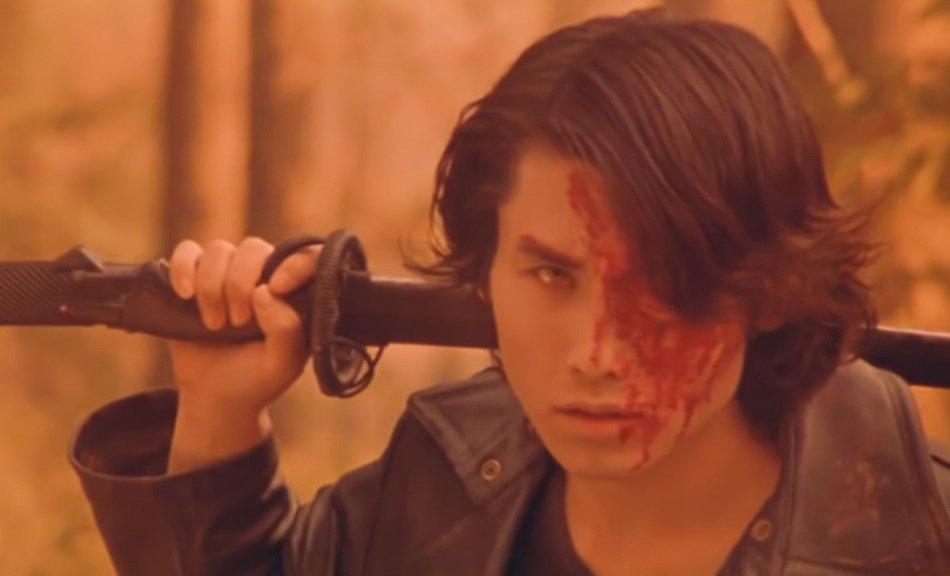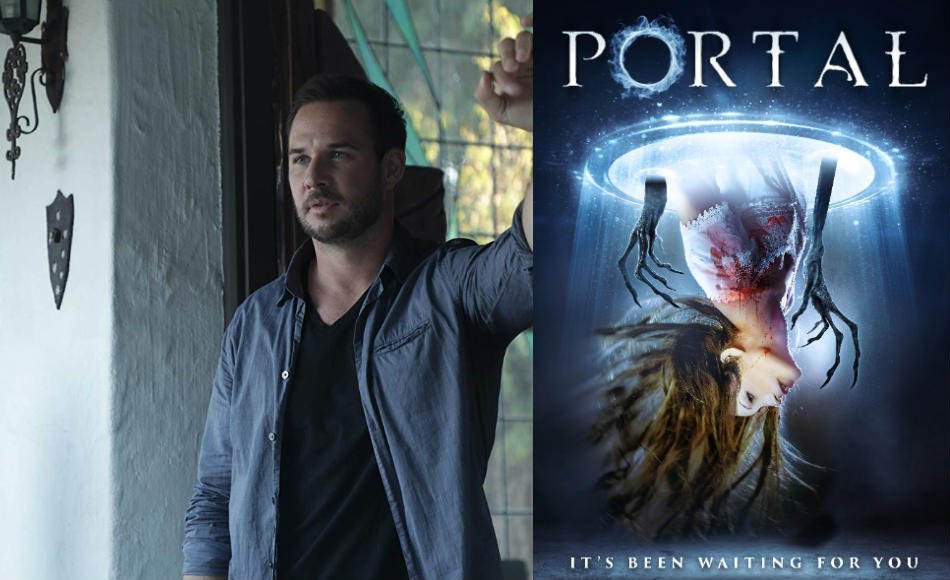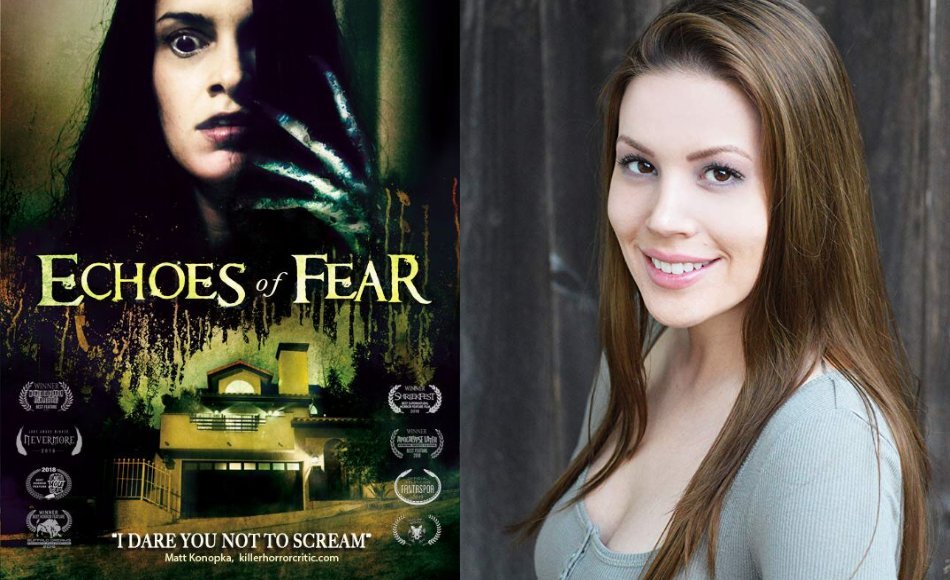While Japanese horror, or J-horror movies are a healthy part of any terror junkie’s diet, a subgenre within is usually too niche for most. But when given a chance, anime horror movies offer much of the same as their flesh and blood brethren. A classic in that genre turned 20 this year, born from a desire to do something original and the child of soon-to-be legends. It’s time we step back and celebrate a film that became its own media empire, Blood: The Last Vampire.
Plot: At the Yokota Air Force base in Japan, a nervous American military is on the brink of the Vietnam War. But a greater threat exists within the walls of the heavily guarded compound: Vampires. A team of top secret undercover agents dispatches a mysterious young woman to destroy them.
Director: Hiroyuki Kitakubo
Writer: Kenji Kamiyama
Runtime: 48 minutes of vamp hacking aplenty.
Rating: R because… well, “blood” is literally in the title.
Cast: Yûki Kudô (Saya), Saemi Nakamura (Makiho), Joe Romersa (David) and Rebecca Forstadt (Sharon)
FULL-BLOODED BEGINNINGS
Production I.G. was a well-established studio by the time they made Blood, which could be viewed as an off-to-the-side experimental project than one of their bigger productions. In a search for fresh new ideas, Mamoru Oshii (Ghost in The Shell, Angel’s Egg) asked his students to submit ideas, which brought to the forefront the up-and-coming filmmakers Kenji Kamiyama and Junichi Fujisaki. Seasoned director Hiroyuki Kitakubo (Robot Carnival) was chosen to shepherd the project forward, hiring the unusual choice of Katsuya Terada as character designer and with Oshii himself functioning as a creative consultant.
Originally envisioned as a three-part OVA series (Original Video Animation), due to budget, it morphed into a multimedia project (one of the first of its kind) with the film being followed up by a one-volume manga written by Oshii and three Light Novels, all culminating in a highly cinematic PlayStation 2 game that took the story further. A live-action adaptation would be eventually released in 2009.
Beyond that, the film spawned an anime series titled Blood+ in 2005, which instead of being a follow-up, was its own continuity, spawning a manga and games, itself. In 2011, yet another stand-alone series was created called Blood-C, once again spinning-off its own media imprint of manga, an animated sequel film, live-action adaptations, and stage a play.
All stemming from a single 48-minute long rip and tearing ride.
But it’s not just media that was created from this influential cult horror movie. From Blood, Fujisaku and Kamiyama would be thrust into prosperous careers, both being torchbearers for the Ghost In The Shell franchise, with Kamiyama to this day still being the chief creative force from the original Stand Alone Complex series to its current sequel SAC_2045 on Netflix.
Terada, who was an unusual choice for character designer as he had worked in the video game industry and not animation, would go on to be a concept designer for Guillermo Del Toro’s Hellboy and would design Godzilla: Final Wars’ version of Ghidorah (Monster X).
That’s what’s so cool about Blood: The Last Vampire, it’s like watching Martin Scorcese’s Who’s That Knocking At My Door in that it’s a patient zero for so much talent and future works that have defined a generation of fans, writers, artists and directors. Despite all that, it’s an anime not heavily discussed outside of extremely small fan circles and remains out of print, its last and only Blu-ray release coming with the live-action film of 2009.
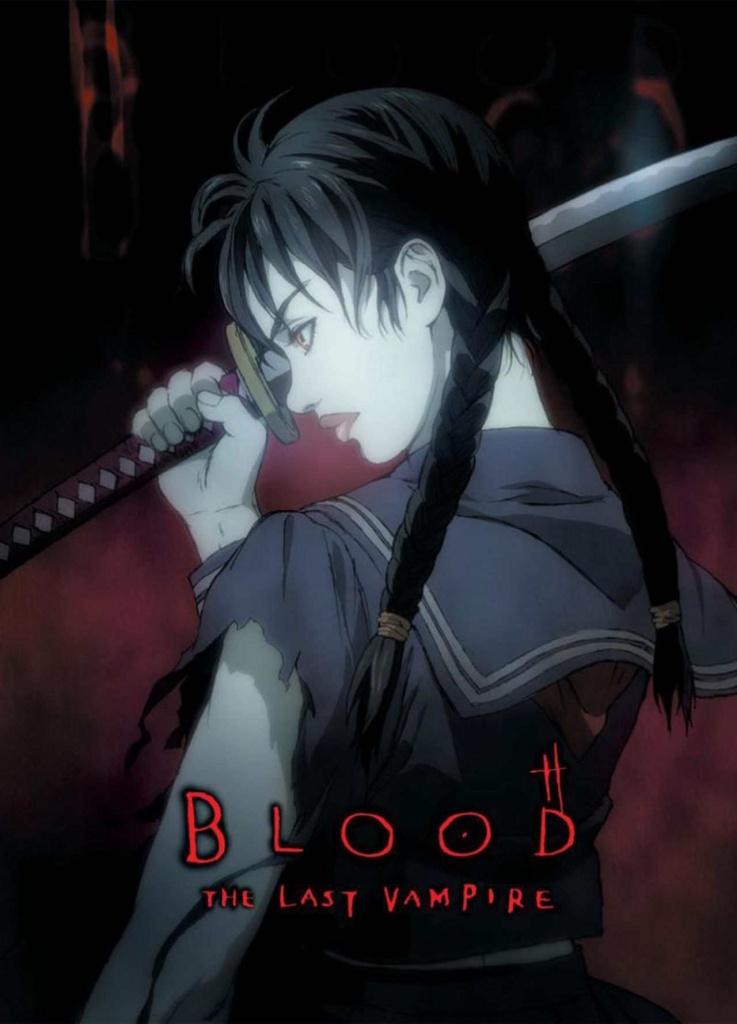
A LEGEND IN LETHALITY
But divorced from the pedigree of its renowned creators and its function as a foundation for shows, books and films, Blood stands as a plain ole’ great horror and gore flick. With a brisk runtime, the action starts with a fervor only occasionally taking moments to build mood, tension and allowing you to sit with its characters.
Saya, our titular Last Vampire, is an enigmatic presence that pulls you in. We learn nothing of backstory or motivations, it’s only through tiny hints, context clues and sheer demeanor we come to understand even a fraction of who, or perhaps what, Saya is. Terada provides her a unique design dissimilar to most anime figures, especially female ones, layering her with unusual amounts of detail and features.
Her appearance and accent read as Japanese while simultaneously seeming far off, unable to be placed, as if from a bygone time. She speaks the language fluently and it’s her preferred way to monologue to herself, but the modern customs of Japan are foreign to her. A stranger amongst a homeland, fitting for someone who only appears to be human on the outside.
Her hyper-focus on the mission at hand to wipe out the vampiric shapeshifters known as chiropterans keeps you engaged. You’re along for her ride, even if we’re handed an audience surrogate character to see the conflict through the eyes of. It’s Saya’s fight, her cavalier attitude with her handlers and her knack for doling out copious amounts of sanguine showers that are the real star of the show.
Like Saya, everything in this plot is left to figure out, affording no opportunities for exposition and deep character building. Instead of weakness, it displays the strength of its crafting, as we never feel lost without those usual trappings. In a hallmark of Eastern storytelling, you feel the story, and through that feeling, you understand and follow it.
The world presented in Blood is a mystery of supernatural wonders invading a richly ordinary world. The audience is not inundated with mystical concepts, tropes about the truth of what is really going on and the clandestine organization that protects us. Saya is introduced dispatching one of her vampiric brethren on a Subway train on a night like any other night, and then complaining that her sword is dull, and she requires a new one before being sent off onto her next mission.No fuss, no muss.
DEATHLY BY DESIGN
Outside of Terada’s unique design for Saya, the monsters of Blood hold a peculiar strangeness as a cross between a prehistoric beast and shaved bats. There are multiple layers to their transformation, at first being between human and creature, then hulking mass of nightmares, until finally sprouting wings in an almost elegant final form. There has never been anything close in film or animation before to match their movement or guise. Saya never actually comes across more powerful than them, making each moment she’s unable to dispatch one quickly a matter of life or death.
And best believe, there is much death. The film is more restrained than other famous anime gore pieces, going for equal tonal horror than sheer bloodshed, but when it flows it paints the walls. It’s just that the movie takes its moments to build up and unleash, so when those creatures grab hold and begin tearing someone apart, it’s far more effective than geysers of crimson exploding like in an episode of Guyver.
There is an artistry to gore, as crazy as that sounds, and Japan often gets this down better than American films, animated or otherwise.
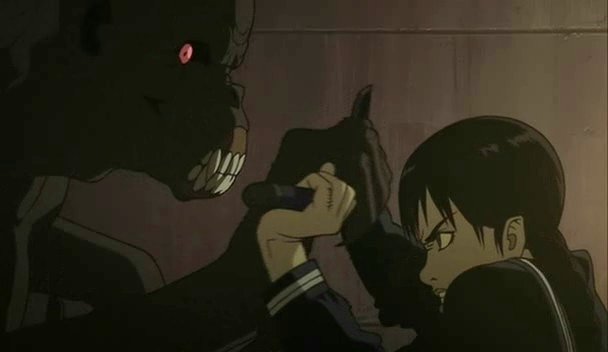
BILATERAL BLOODLETTING
Apart from the cool monster-mashing, Blood: The Last Vampire is backdropped against a costume-filled school dance on Halloween night. But it’s not solely for the fun visual of everyone humorously dressed as vampires amid a battle against real ones. No, it’s specifically set during Halloween 1966, with a war growing ever more unstable in Vietnam.
Cultural identity, as well as U.S. and Japan relations and the related culpability in Vietnam escalation, is the aura of Blood. Settling for more than quickie horror farce, it grounds itself through an allegorical prism, acting as criticism and commentary on real-world history and geopolitical strife. Taking place in October 1966 is of note specifically due to the protests, led by the General Council of Trade Unions of Japan, against the bombing of Hanoi by the United States.
The Security Alliance between the U.S. and Japan has long stood in contention and controversy due to heavy American military presence, administrative control of certain areas, amongst many more complicated matters of political muck.
Many in Japan saw the Alliance and the stationing of troops as financial, with the Government viewing goods selling to American soldiers as an economic stimulant. To the U.S. it was strategic, a way to control communism in Asia, along with functioning as a staging area during Vietnam. One could say the relationship is vampiric, happily siphoning off one another, welcoming a nuzzle at your neck.
Early on, we witness a crime scene; a dead prostitute, wrists slit, either by her hand or someone else’s, in a brothel outside the military base. An observing working girl remarks that it can’t be helped if they’re making a living off the base, all while a landing B-52 roars overhead, its presence drowning out the conversation. At the costume party, Americans dress as vampires while the real vampires pass through undetected.
Saya, Japanese, told to remove a foreign presence infiltrating a military base by her American handlers before it spreads to the Asian populace, which she rightly calls out as nowhere near as easy as they seem to believe. Beaurocratically difficult, one could argue.
An obvious metaphor, but a distinction of who the true vampire between the U.S. and Japan is treated as ambiguous as Saya’s origins. What’s clear is that something is deeply wrong with the culture surrounding these policies. Saya’s mission to kill her kind is likened to humans’ way of killing one another needlessly—said by a character holding a dangling crucifix, the implications complex and sobering.
As stated, Saya is Japanese but appears foreign to her heritage. Near the end of the film, the audience surrogate character, a Japanese nurse named Makiho, is shown an old photograph dated 1892, and in it is a young girl in a white dress, surrounded by other well-dressed figures, that looks exactly like Saya.
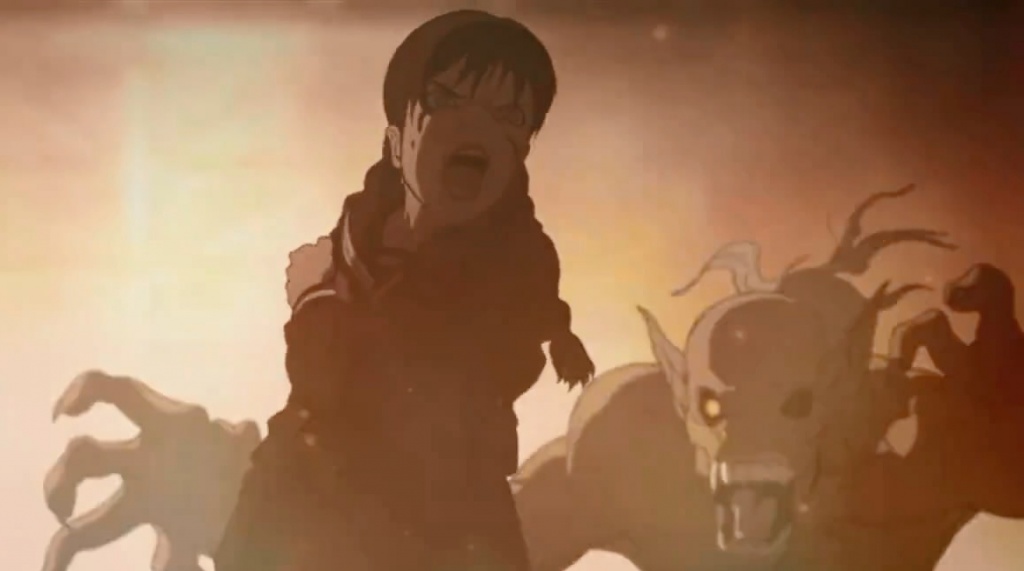
Once again, nothing about the clothes or location of the photo screams Japanese culture in any way, but it’s important to remember that 1892 was during the Meiji Restoration, a time Japan rapidly, nearly by force, shed many of its customs for Western ones. Saya is Japanese, yes, but she grew up during a period when that identity began to be erased, a notion that often plagues and troubles Japan, that the Security Alliance can be seen as continuing tradition.
Concessions create calamity, and a subtle point is made to intertwine Japan and the U.S. into the Vietnam conflict in equal measure, calling out the bombers, these American war machines, launch from a Japan located base. The vampires symbolize much, functioning strongly as an undying repeating past just as much as political subterfuge, and Saya and Marikho (who has a Western middle name and religion) fit within the history of stateless individuals caught between worlds.
DIPLOMACY IS A BLADE’S EDGE
Blood: The Last Vampire doesn’t provide conclusions to these ponderings, instead, commenting through images and background chatter like a breathing and bloody art installation. It leaves you wondering if conflict can be measured in such archaic terms as good or evil. Saya will continue acting on behalf of her faceless handlers, killing her kind, and humans will continue to act on faceless beliefs, killing their kind, on and on.
A fun, short little flick about a Japanese schoolgirl with a sword smacks you with this philosophically nebulous conflation of cultural ideals and political follies, all in its final few seconds. Blood: The Last Vampire is in the proud tradition of horror movies that comment on our history, the political turmoil we find ourselves in, and how we are sometimes complicit in atrocities under the guise of innocence. Sometimes the good guys are monsters, too.




